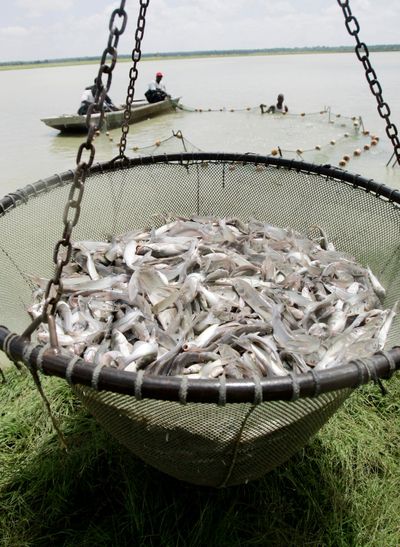Feds tighten belt by cutting ag reports

PIERRE, S.D. — When farmers need to check honey prices so they can decide whether to sell, there’s been a report for that. And when catfish and sheep farmers want to check production in their industries, there’ve been reports for that, too.
The U.S. Agriculture Department has kept tabs for decades on a wide range of agricultural industries that generate billions of dollars for the U.S. economy. But that’s about to change, as the agency eliminates some reports and reduces the frequency of others to save millions of dollars in tight budget times.
The reports influence the price and supply of many products that end up on American dinner plates. Without them, some farmers say they’ll be left guessing how much to produce and when to sell. Food processors and traders also will have less information when making decisions about buying and selling.
South Dakota farmer Richard Adee said he used the annual honey and bee report to decide when to sell his honey. If the February report indicated a large supply nationwide, he’d sell before prices dropped. If the supply was short, he’d hold on to the honey and wait for prices to go up.
“It’s really going to limit us to information for making future plans,” said Adee, one of the nation’s largest honey producers. “It’s not good. It’s not good we’re losing that.”
Adee Honey Farms, based in Bruce, S.D, provide bees that pollinate crops and produce honey in the Midwest, California and Washington. Adee said he knows something must be done to deal with the federal deficit, but “they’re beating up on agriculture.”
A spokeswoman for the USDA division that produces the reports said it didn’t want to cut them but it had to do something to save money. Eliminating or reducing the frequency of 14 crop and livestock reports will save the National Agricultural Statistics Service about $10 million, Sue duPont said. NASS’s $156 million budget was cut in the federal fiscal year that ended Sept. 30 and more reductions are expected this year as Congress and the White House aim to trim federal spending.
Roger Barlow, executive vice president of Catfish Farmers of America, said the annual report on his industry tells his organization’s 800 members how many millions of tons of catfish are being produced in how many acres of water, how much is being held by processors and what prices are being paid. The information determines prices and guides farmers as they decide to expand or cut back production, he said.
“Lots of decisions are made upon this,” Barlow said. “This information is used on a daily basis.”
Mississippi is the leading catfish producer according to the latest and last report. But the farmers, who are mostly located in the South, hope NASS with reconsider its decision to dump the report.
“I guess we’re just scratching a hole in our head trying to figure out how we’re going to continue with what we feel is extremely important,” Barlow said.
Most of the information in the reports being cut will still be included in the agricultural census, which is conducted once every five years. The one released in 2013 will reflect the state of farming in 2012.
But the lack of annual reports “kind of limits what we have as far as information for making decisions on a year-to-year basis,” said Shane Ellis, a livestock economist at Iowa State University.
Farmers in some industries may turn to trade organizations to collect information previously reported by NASS, while those in smaller ones, such as honey and catfish, might be able to get by without the data, he said.
“It’s just the nature of the niche marketing in how it tends to be more of a market where everybody knows everybody else. … They have a good idea of where everything is going,” Ellis said.